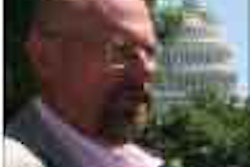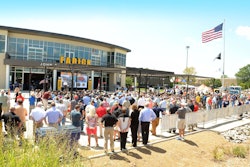Is the Reauthorization wind shifting?
The pressure of having no working alternatives to replace the fuel tax continues to build
By John Latta, Tina Grady Barbaccia and Mike Anderson
Is there some serious ground shifting going on, when it comes to what sort of highway bill we might (or might not) get this year?

* In Washington, Senate Finance Committee Chairman Max Baucus (D-Mont) is saying that Congress may have no choice but to consider a much smaller bill, and one that runs over a smaller-than-usual timeframe, because of the woeful state of the Highway Trust Fund (HTF).
* And Missouri DOT (MoDOT) is facing a situation where it might have to turn down millions of federal highway fund dollars in a few short years if it can’t come up with millions of its own to match them. Missouri is certainly not alone among the states that are facing this potentially crippling crunch, nor alone in wanting a bill to be passed so serious work can be planned.
If Baucus is right then, ironically, it might make state problems easier to deal with since the amount of dollars coming from Washington would be far lower than the amounts states now anticipate they would have to match. The bill’s funding levels would at best match SAFETEA-LU and possibly fail to even reach that level. But the downside is worse: It would also mean less total funding spent on transportation in states, a downward spiral accelerator as it hits the struggling transportation infrastructure and construction industries that need not a drop but a boost in spending.
Baucus may simply be floating a trial balloon to see if there is any chance of averting the stalemate by getting a compromise bill together. But if Baucus is reading the preliminary tea leaves correctly and the bill only runs three years as he suggests it might have to, states may have a chance to get back on their feet before the next “long-term,” i.e., six-year bill is passed, hopefully in a significantly strong economy. It may also be possible that in two years Congress will have found a way to get enough funds into the HTF without relying almost completely on fuel taxes, because that source is hopelessly inadequate these days. But there is almost no evidence that the economy will be pre-recession strong in three years, nor is there evidence that fuel tax replacement sources capable of producing the needed funds will be in place by that time either.
Baucus is a minority on this issue. The Obama Administration wants a six-year, $556-billion bill, and Sen. Barbara Boxer (D-Calif) is leading the movement in the Senate to try to create one, and has the vital chair of the Senate Environment and Public Works Committee with which to do it. The problem, of course, is that neither the administration nor Senator Boxer can figure out a way to pay for it without raising fuel taxes, something they say they will not do.
In the meantime, MoDOT Director Kevin Keith says despite making some major cost cuts due to come into effect over the next five years, the state may have to start turning down federal funds by FY 2017. He is making an assumption that HTF funds will stay at SAFETEA-LU levels and is caught in a nasty, three-way Catch 22. If the levels of funding from Washington do stay at that level, 2017 is the year he starts turning down vital funds. If somehow the Administration gets its way on a bigger bill, the turndown starts earlier. And if the levels drop, while it staves off the turndown date, it also leaves the states without enough funds to help the transportation infrastructure sector recovery to any significant degree and limits how much vital work can be done. Other states with similar fears add to the pressure on Washington to do something.
Most transportation lobby groups in Washington vociferously say a strong six-year bill is essential so that plans can be made for long-term projects. American Road and Transportation Builders Association chairman Bill Cox said that without a six-year bill, “We are missing an opportunity to provide a long-term foundation for full economic recovery and renewed competitiveness.”
There must be, they say, enough funding in it so that states are not simply treading water and watching their transportation infrastructure continue to fall apart. They have also generally argued that three years from now the economy will not have transformed itself into booming mode so the problems facing a new bill then will not be much different than the problems now. They have almost argued loudly that it has been a year-and-a-half since SAFETEA-LU ended and the basic problem of funding has not changed. The American Association of State Highway and Transportation Officials (AASHTO) has indicated some support for a multi-year bill without that could run less than six years, arguing that “multi” is the key goal.
A World of Bridges
If it’s June and Pittsburgh, it must be the International Bridge Conference. Next month welcomes the 28th annual IBC, the world’s most influential trade show connecting all sectors of the bridge industry under one roof, hosted by the Engineers’ Society of Western Pennsylvania (ESWP).
The event runs June 5-8 and details can be found online at www.internationalbridgeconference.org and registration is available at www.eswp.com/bridge
Last year a new strategic IBC partnership between the ESWP and the American Road and Transportation Builders Association (ARTBA) was announced. The two organizations have now developed a 2011 conference curriculum focusing on bridge financing and regulations, new project delivery methods and safety to help increase participation of highway and bridge contractors and public officials. The event provides technical sessions, workshops and special interest sessions and seminars that are four-, eight- or 16-hour intensive courses.
IBC annually attracts more than 1,600 attendees, with the 2010 participants coming from 48 states and 17 countries.
The three primary purposes of the IBC are:
• to host unparalleled educational sessions and workshops covering all of the latest trends and technologies in the bridge marketplace;
• to help service providers and manufacturers sell products and services to customers in a growing domestic and international bridge market; and
• to provide networking opportunities for thousands of professionals representing all facets of the bridge industry.
“IBC exists to help service providers and manufacturers sell products and services to customers in growing national and international bridge markets,” says ARTBA Director of Public Affairs Jeff Solsby. “It annually attracts thousands of bridge owners and engineers, senior policymakers, government officials, bridge designers, construction executives and suppliers from all 50 states and 20 countries in North America, Europe and Asia.”
Bypasses Needed to Bypass ‘Corridors of Crap’ Bypasses
“The problem, of course, is that you can hardly go anywhere in North Carolina, or even in the country, and not find a state-taxpayer-built highway envisioned as a ’bypass’ that has become a traffic nightmare because the local government involved allowed extreme highway glop to be built along it. Even places as comparatively traffic-free as Albemarle have clogged bypasses. Shelby wants a bypass of its bypass. They are all what former Charlotte Mayor Pat McCrory has referred to as ’corridors of crap.’”
— Mary Newsom, a Charlotte Observer associate editor and op-ed columnist, in her “The Naked City” blog.

Please don’t leave after the next sentence. The International Roundabout Conference will be held in Carmel, Ind., May 18-20. Read on. This event has some legs.
Carmel, pop. 80,000, has 60 roundabouts, replacing traffic-lighted intersections. Mayor, Jim Brainard, just loves them. He’s not stopping at 60; he’s converting 20 or so more. Sound a little flaky? Well, no, it’s not.
The conference promoters say that, “roundabouts result in an average 30-percent reduction in fuel consumption at each intersection” and cut the number of injury accidents at those intersections by 80 percent. TIME magazine reported back when there were only 50 roundabouts in Carmel that the city saw a 78-percent drop in accidents involving injuries and a savings of some 24,000 gallons of gas per year per roundabout because of less car idling.
Check out the conference, hosted by Carmel and Purdue University:
www.TRB.org/Conferences/Roundabout2011.aspx. OR https://www.insideindianabusiness.com/newsitem.asp?ID=46876

Kentucky ranked the worst in public-property litter removal efforts, and Washington state best, according to the 2011 American State Litter Scorecard presented at the American Society for Public Administration’s national conference. Each year, more than 800 Americans die in debris/litter-attributed vehicle accidents, according to the Scorecard.
States are ranked for resulting environmental quality from their overall public space litter eradication activities (mostly focusing on roadside and adjacent properties), which included the existence of behavior-controlling slogans, recycling and beverage deposits legislation, integrity of public property maintenance expenditures, departmental performances and environmentally-political-citizen-friendly conditions.
Rounding out the best states are Washington, California, Iowa, Maine, Connecticut, Rhode Island, Vermont, Oregon, New Hampshire, North Carolina and New York. Bringing up the lower end of the rankings scale just ahead of Kentucky are Louisiana, Mississippi, Nevada, Alabama, Indiana, Georgia, Illinois, Oklahoma, Montana, North Dakota and Texas.
SAY WHAT?
“We’re not going to reduce the deficit by sacrificing investments in our infrastructure.”
President Barack Obama












